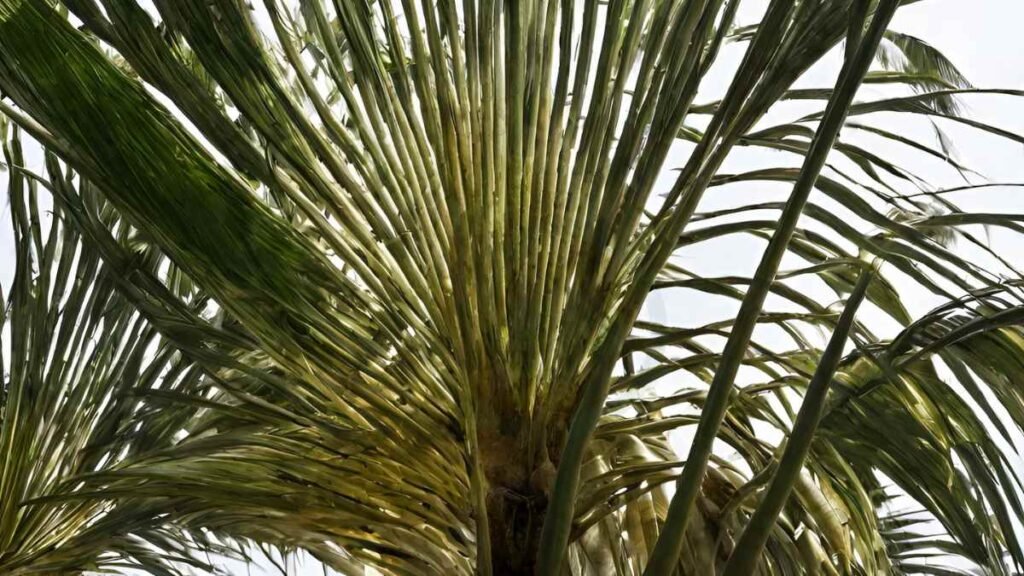
Are your beloved tropical indoor plants, like the areca palm, showing symptoms of distress, with leaves turning brown and drooping due to issues with their roots? Don't panic just yet. Understanding the common reasons behind why your areca palm might be dying is crucial to saving it from further decline. In this guide, we will explore the potential causes of your areca palm's deterioration and provide actionable tips to revive its health and vibrancy.
Key Takeaways
- Recognize Signs: Pay attention to yellowing or browning leaves, as they can indicate issues with watering, humidity, nutrients, pests, or temperature.
- Address Watering Issues: Ensure proper watering by allowing the top inch of soil to dry out before watering again, preventing root rot.
- Manage Humidity Challenges: Increase humidity levels by misting the plant or using a humidifier to mimic its natural environment.
- Address Nutrient Problems: Provide balanced fertilizer regularly to replenish essential nutrients and promote healthy growth.
- Combat Pest Infestations: Monitor for pests like spider mites or mealybugs and treat promptly with insecticidal soap or neem oil.
- Regulate Temperature Stress: Protect the plant from extreme temperature fluctuations and drafts to maintain its health.
Recognizing Signs
Yellowing Fronds
Yellowing fronds in areca palm may indicate issues like excessive sunlight or insufficient watering. Monitor the plant's overall health during yellowing and consider relocating it if needed.
Drooping Leaves
To address drooping leaves, assess the watering frequency and ensure proper hydration levels to revive wilted leaves. Watch out for signs of underwatering when leaves begin to droop due to soil.
Leaf Discoloration
Investigate potential fungal or bacterial problems causing discoloration in areca palm leaves. Address any pest-related issues leading to leaf spots and consider environmental factors contributing to discoloration.
Stunted Growth
Evaluate the plant's nutrient intake from the soil to tackle stunted growth in areca palms. Monitor environmental stressors impacting growth and apply suitable fertilization methods to encourage healthy growth.
Pest Damage
Identify common pests such as spider mites or mealybugs causing damage to areca palms. Combat pest infestations using neem oil or soapy water, and regularly inspect the plant for signs of pest activity.
Watering Issues
Overwatering Symptoms
Recognize signs such as soggy soil that feels wet to the touch and yellowing leaves indicating root rot. Adjust watering practices by allowing the soil to dry out between waterings. Ensure proper drainage holes in pots to prevent waterlogging.
Underwatering Symptoms
Address dry soil that feels parched and droopy leaves signaling dehydration in your areca palm. Establish a consistent watering schedule, ensuring the plant receives adequate moisture. Provide enough water to revive dehydrated plants without causing root rot.
Watering Remedies
Implement appropriate watering techniques by checking the moisture level of the soil before watering again. Adjust the watering frequency based on environmental conditions and plant size. Consider using a moisture meter for accurate monitoring of soil moisture levels.
Humidity Challenges
Low Humidity Symptoms
Areca palm struggles in low humidity, showing signs like brown tips and crispy leaves. Maintaining ideal humidity levels is crucial for the plant's health. Utilize methods such as misting or a humidifier to raise humidity levels.
Humidity Remedies
To combat low humidity, take action to increase humidity levels around the areca palm. Regularly monitor humidity levels to prevent any potential issues from arising. Grouping plants together can create a microclimate that fosters a more humid environment.
Nutrient Problems
Deficiency Symptoms
Areca palms suffering from nutrient deficiencies exhibit distinct signs such as yellow leaves with green veins. This indicates a lack of essential nutrients for proper growth. To address this, ensure balanced fertilization to replenish the missing nutrients and promote healthy foliage. Consider using slow-release fertilizer options for a continuous and sustained nutrient supply.
Fertilization Remedies
To combat nutrient deficiencies effectively, it is crucial to establish a regular fertilization schedule tailored to the areca palm's needs. Selecting a balanced fertilizer rich in the necessary nutrients is essential for optimal plant health. Moreover, take into account the plant's growth stage when applying fertilizers to maximize their benefits.
Pest Infestations
Spider Mites
Spider mites are identified by webbing on leaves and tiny holes, causing damage to the plant. To combat them, use neem oil or soapy water as treatments. Isolate affected plants to prevent further spread of spider mites.
Mealybugs
Recognize mealybugs by the presence of sticky leaves and cottony deposits on the plant. Combat mealybug infestations with targeted treatments like insecticidal soap or neem oil. Regularly monitor plants for any signs of recurring mealybug issues.
Pest Remedies
For effective pest control, utilize natural remedies such as neem oil or soapy water, which are eco-friendly options. Consider introducing beneficial insects like ladybugs or lacewings to help combat pest infestations naturally. It is essential to maintain plant hygiene by regularly cleaning leaves and inspecting for pests to prevent recurring problems.
Temperature Stress

Cold Stress Symptoms
Areca palms experiencing temperature stress may display signs like brown spots and wilting. To prevent damage, protect plants from extreme cold by moving them indoors during colder seasons.
Recognize heat stress symptoms in areca palms such as wilting and fried leaves. During hot weather, provide shade or adjust the plant's location to mitigate heat stress. Ensure proper ventilation to maintain a healthy environment for the plant.
Heat Stress Symptoms
Maintain optimal temperature ranges to ensure the health of areca palms. Shield plants from temperature extremes by providing adequate protection. Adjust indoor conditions to regulate temperature fluctuations and prevent stress on the plants.
Preventive Measures
Proper Watering
Proper watering is crucial for the health of your areca palm. Adjust watering based on plant needs to prevent overwatering or underwatering issues. Monitor soil moisture regularly to ensure optimal hydration levels.
Ideal Humidity
Maintaining ideal humidity levels is essential for supporting the growth of your areca palm. Consider using a humidity tray or room humidifier to create a suitable environment. Grouping plants with similar humidity requirements together can help maintain consistent levels.
Fertilization Schedule
Establishing a consistent fertilization schedule is key for providing optimal nutrition to your areca palm. Choose a fertilizer that offers the right balance of nutrients for healthy growth. Adjust the frequency of fertilization based on the plant's development and seasonal requirements.
Pest Prevention
Preventing common pests is vital in ensuring the well-being of your areca palm. Regularly inspect your plants for early signs of pest infestations to address them promptly. Implement natural pest control methods, such as neem oil or insecticidal soap, to deter pests effectively.
Reviving Areca Palm
Tailoring Care
Customize care routines to meet individual plant needs. Adjust practices based on plant responses. Consider light exposure and temperature when tailoring care.
Monitoring Progress
- Regularly monitor plant health for improvements.
- Keep records of changes in plant condition.
- Adjust care strategies based on progress or setbacks.
Patience and Care
Practice patience in addressing plant issues. Consistently show attention to plant needs. Observe changes in plant health and behavior closely.
Maintenance Tips
Regular Inspection
Conduct routine inspections to detect early signs of problems. Check for pest activity, nutrient deficiencies, and environmental stressors. Inspect both the plant and its surroundings for potential issues.
Adjusting Care
Be flexible in adjusting care routines based on plant feedback. Modify watering, lighting, and fertilization practices as needed. Monitor plant responses to care adjustments for optimal growth.
Closing Thoughts
By recognizing the signs, addressing watering, humidity, nutrient issues, and pest infestations, and managing temperature stress, you can prevent your areca palm from dying. Following the preventive measures, reviving your plant, and implementing maintenance tips will help ensure its health and vibrancy. Remember to stay vigilant and proactive in caring for your areca palm to enjoy its lush beauty for years to come.
Take action now to save your areca palm! Implement the strategies outlined here to nurture your plant back to health and create an optimal environment for its growth. Your dedication and attention to detail will be rewarded with a thriving and flourishing areca palm in your home. Keep up the good work!
Frequently Asked Questions
How can I recognize signs of a dying areca palm?
Look for yellowing or browning leaves, drooping fronds, and stunted growth. Check for moldy soil or pest infestations. Addressing these signs promptly can help save your plant.
What are common watering issues for areca palms?
Overwatering can lead to root rot, while underwatering causes dry, crispy leaves. Ensure the soil is well-draining and water only when the top inch feels dry to the touch.
How do humidity challenges affect areca palms?
Areca palms thrive in high humidity levels. Low humidity can result in brown leaf tips and edges. Mist the leaves regularly or use a humidifier to maintain optimal humidity levels.
What nutrient problems can affect areca palms?
Deficiencies in essential nutrients like nitrogen, potassium, or magnesium can cause yellowing leaves or stunted growth. Use a balanced fertilizer specifically formulated for palm plants.
How do I prevent pest infestations on my areca palm?
Regularly inspect your plant for spider mites, mealybugs, or scale insects. Keep the plant clean and dust-free, and consider using neem oil or insecticidal soap as a preventive measure.
Image Source: Paid image from CANVA





